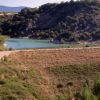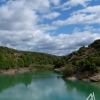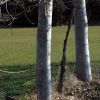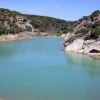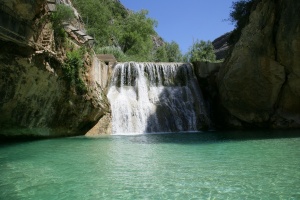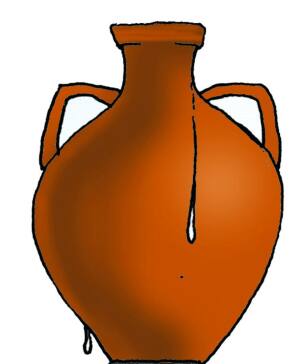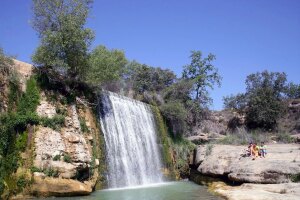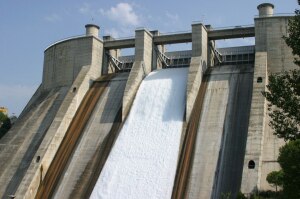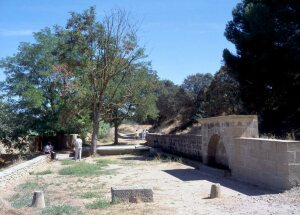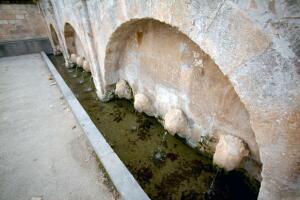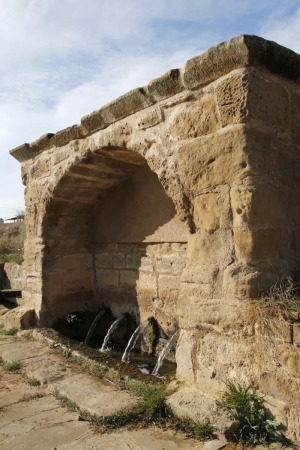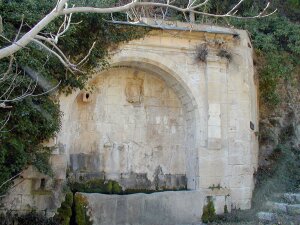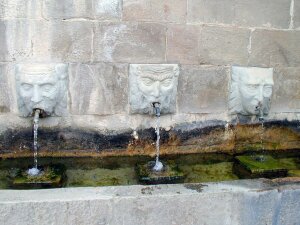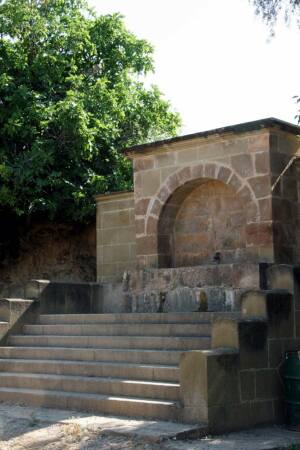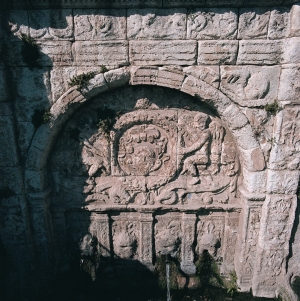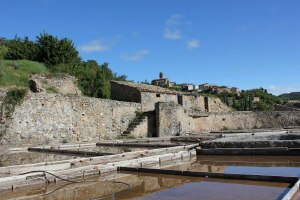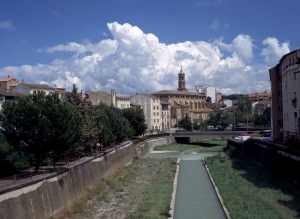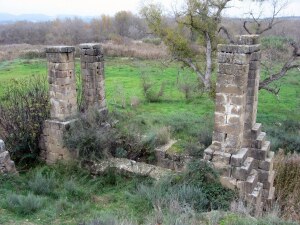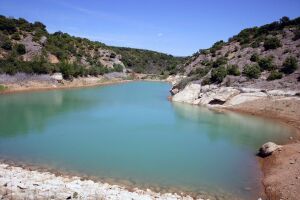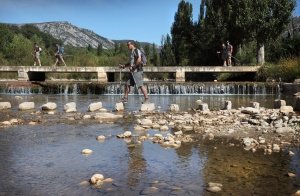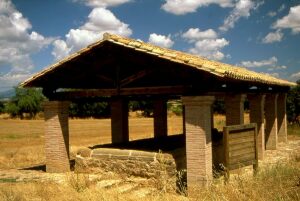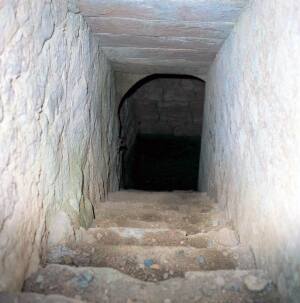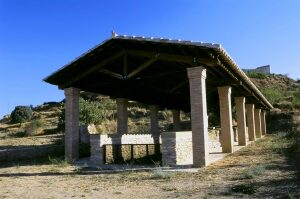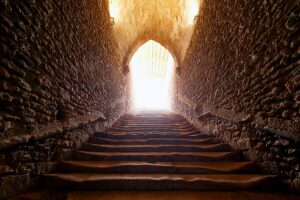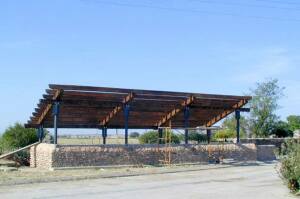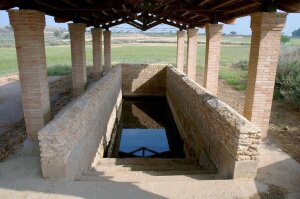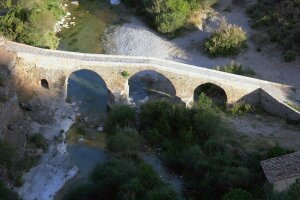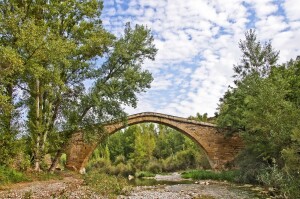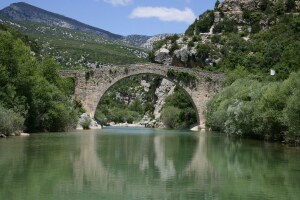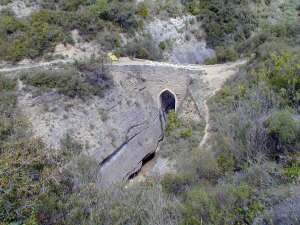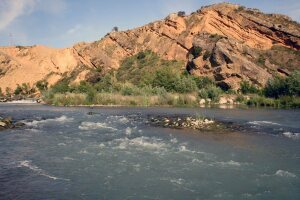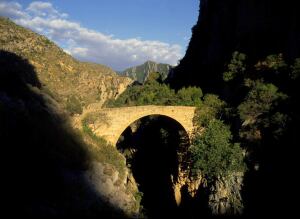La Fondata reservoir was constructed at the end of the 18th century with the specific aim of storing water for irrigation. Although no major river runs through the Azlor municipality, a number of springs feed small streams and important canyons such as La Clamor.
Holding approximately 64 hm3 of water the reservoir was one of the largest in the whole country at the time of its construction at the end of the 18th century. Work began in 1795 and continued for at least five years. After recent renovation the reservoir is still in use today.
The water is held in the reservoir thanks to a curved wall (convex towards the exterior) that stretches for 50 metres to close the canyon. It is made of well cut, square ashlars of huge dimensions and creates a stretch of water of over 100 metres in length. The dam rises 14.95 metres from the ground and in the centre there is a small vaulted chamber that serves as a drain.
At the time of its construction, a work of this importance could only have been achieved in special circumstances. In this case, Azlor’s place as an estate of importance was assured due to its many economic resources.
In addition, a work of these characteristics could only be developed within a specific ideological context, that of “The Age of Enlightenment.” During this period, the whole of Spain was infused with a reformist spirit based on progress. The Court urged the most influential and wealthiest of people of each village to study the problems encountered with agriculture, livestock farming, industry, commerce and communication. In fact agriculture was at a peak, manufacturing was on the increase and commerce had intensified at this time so the moment was ideal and the reception of projects such as the Fondota Reservoir was enthusiastic.
La Fondota Reservoir is also known locally as the Moorish Reservoir referring to the clever use of water from an ancient past. In Somontano, popular tradition attributes many things that have uncertain origins to the Moors such as the Spring Well de los Moros en Ponzano, the d´os moros ice house in Buera and the Basacol pools in Alquézar...



